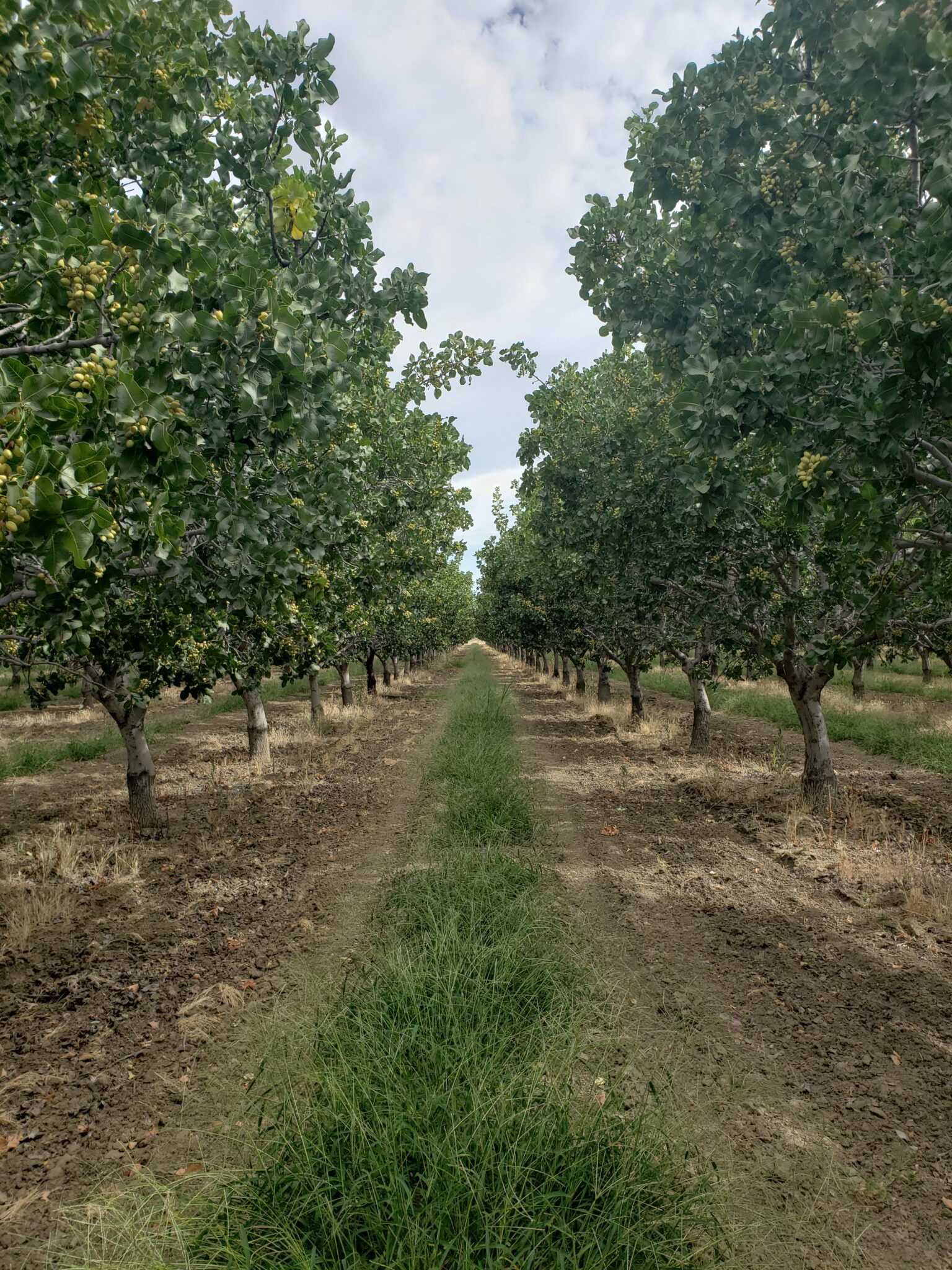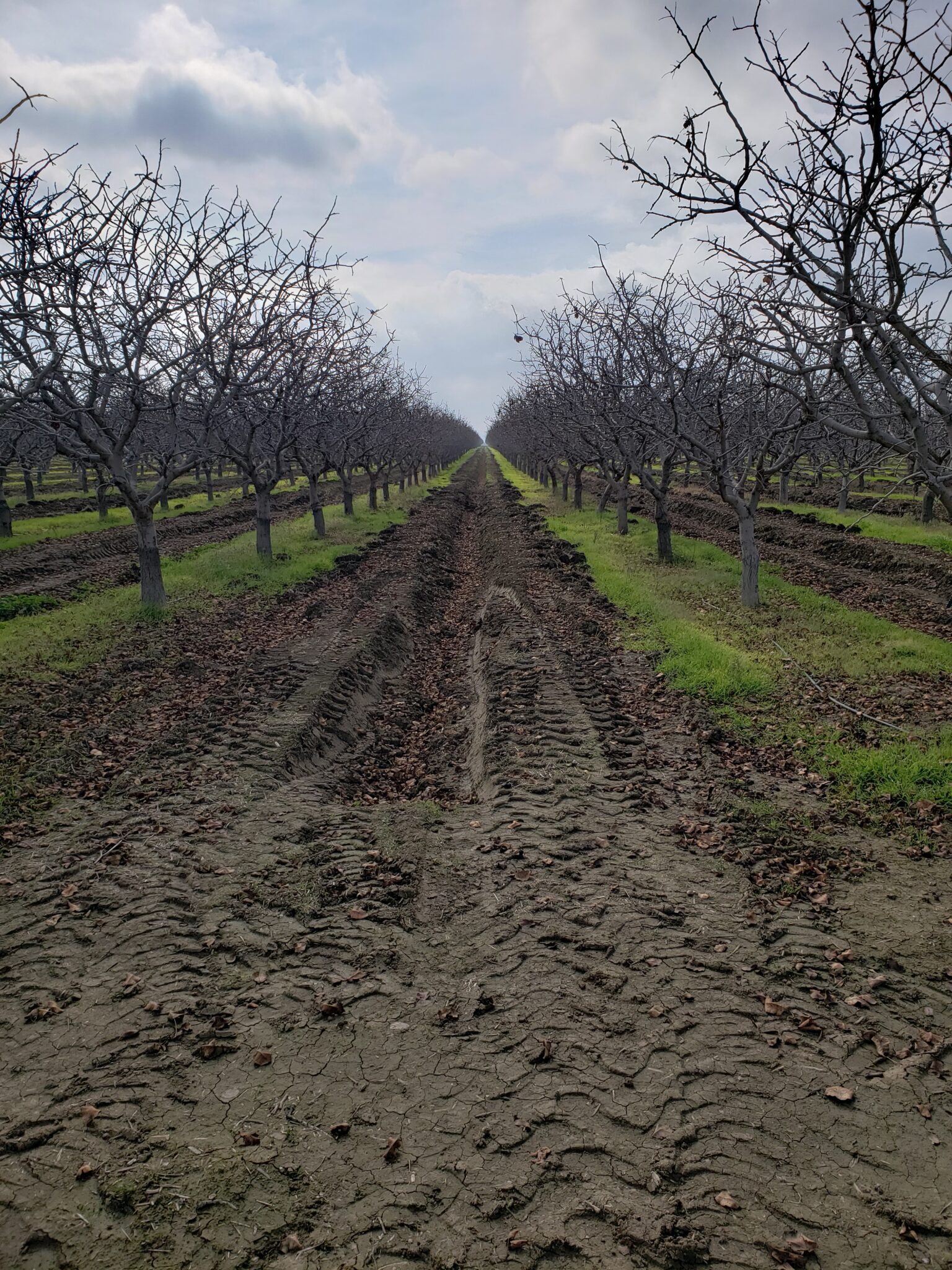
Pest control and nutrition are two of the biggest challenges to organic pistachio production, but the Nichols family of Hanford, Calif., has found a way to thrive in the organic market. By selecting a location where their organically farmed pistachio trees would have minimal disease pressure and an optimal environment for production, Nichols Farms aimed to put themselves in a position to produce quality pistachios in an organic system.
The Nichols family began planting tree nuts in the 1980s, transitioning from row crops. Their orchards are in Tulare, Kings and Fresno counties. James Nichols, the third generation of the family to farm tree nuts, said the decision to diversify their tree nut production and branch into organic production was a way to further diversify their crop production. A side benefit has been to develop another line of retail pistachio from their processing and marketing operation. The nut processing facility was built on-farm in 1991 and includes a 6-acre solar farm that generates 50% of the power needed to operate the facility.
The Nichols Farms branded almond and pistachio products processed there are sold in major retail outlets nationwide. Nichols Farms packaging emphasizes the family’s sustainable farming practices including drip irrigation, solar power to run the processing facility, recycling crop by-products and use of compost. The conventionally and organically grown pistachios are sold shelled and inshell. Marketing director Caleb Adams said Nichols Farms will soon be direct marketing almond and pistachio products online.
To produce a quality product and meet market demand for organically grown pistachios, Nichols pays close attention to farming practices in the organic blocks. Choosing a site on the arid west side of the San Joaquin Valley was the first step. Nichols said the organically grown blocks of pistachio trees are adjacent to other organically produced crops including asparagus, sweet peas, and carrots and grains. Having organic producers as neighbors increases beneficial insect populations, and reduces the likelihood of drift from conventionally produced crops.
Nichols said the first block of pistachio trees were planted in that location and farmed conventionally until their 7th year when they began the transition to organic in 2009. A second block was transitioned in 2013. All the trees are Kerman variety on PG I rootstock.
When transitioning the trees, Nichols said their fertilizer program underwent the most change. In order to provide adequate nutrition for the trees to maintain health and achieve good yields, Nichols said they worked with a local farmer, providing land for compost production and supplying all by-products from their processing plant plus orchard litter to make compost. Poultry and dairy manures are added to the compost mix. The compost applications in the orchards have worked well for the trees for the past 11 years, Nichols said. They have to get that part right, he added, because nutrition is a key factor in having a high split percentage.

The organic certifier, California Certified Organic Farmers, requires a leaf and soil analysis annually to justify fertilizer applications. Nichols said the trees do have a much lower nitrogen percentage in the leaves compared to the conventionally grown trees, but levels are sufficient for crop yield.
Irrigation in the orchards is also managed differently, as they made a decision to move the single line drip hose from the tree rows to the middles. This move accomplishes several objectives: It irrigates a trap crop of vegetation, moves nutrients from compost applications to the tree roots; and the dry tree rows have less weed pressure.
Root systems of the mature trees have spread to the middles, Nichols said. He uses sensors and pressure bombs to measure water stress on the trees with the new system and found he was using the same amount of water to irrigate in the middles without stressing the trees.
The trap crops are part of a research project initiated by UC Riverside research entomologist Houston Wilson. Trap crops work by drawing pests away from the target crop. The theory is that by providing an attractive habitat, the insect pests would cause less damage in the tree crops. In 2019, the first year of the project, Wilson determined that beneficial and predatory insects were found in greater numbers in the trap crop and parasitoid populations increased in the tree canopies where trap crops were planted.
Nichols said they have tried different mixes of plants for their trap crops, including alfalfa and radish, clovers, sunflowers, wheat and oats. The trap crops are mowed just prior to harvest, so insect pests won’t move into the trees when they lose the habitat. Nichols said they planned to continue with the trap crops to lessen crop damage from small and large bug feeding.
Insect pest management has been a challenge, but Nichols noted the terrible production year 2015 may be one reason the NOW has not re-gained a foothold in the area, as numbers did not rebuild after that year. Nichols Farms has a rigorous orchard sanitation program which is the foundation of its NOW control. Nichols said mummies are shaken after harvest and the floors of the orchards are cleaned. He added that the heavier soils in the orchard retain much more water, which helps by breaking down any remaining food sources on the orchard floor for overwintering NOW.
Stink bugs and leaffooted bugs are their main insect pests. Stink bugs feeding on the developing nuts can impact split percentages, cause shell staining, and defects which lowers value.
They do have extra labor costs for controlling vertebrate pests that girdle tree roots and weaken trees. Trapping gophers and squirrels is done year round to keep populations under control.
Early harvests are normally recommended to prevent insect damage to the crop, but Nichols said they tend to harvest their organic blocks a little later than their conventional blocks. Their first shake in the organic orchards is usually the third week in September to first of October. By that time, he said, their conventional production takes a break and they have a spot open in the processing facility for the organic product.
They have to follow CCOF requirements in the processing and hauling, sanitizing with approved products and documenting the process. At the processor, the organically grown pistachios have an extra step. After hulling and drying, the nuts are held in cold storage.
Product quality is an important part of their organic production, Nichols said. While their yields may be lower, they aim for a high quality product. The payable yields have been lower for organic pistachios, Nichols said, but the dry weight yields are roughly the same as conventionally produced pistachios. This is the reason for the focus on stinkbug control, fertilization and irrigation management. With those three dialed in, the payable yields will be higher with a higher return per pound produced organically, he added.
Presently, organic pistachio production is a very small part of the pistachio industry. Higher production costs, with nutrients being a significantly higher input, means growers must emphasize quality, Adams said. There is consumer demand for an organic option in pistachios, and along with the health benefits promoted by American Pistachio Growers, he expects the market will grow.
“We are focused on producing a consistent, quality product and we want to be 100% comfortable with the products we are selling,” Adams said.











